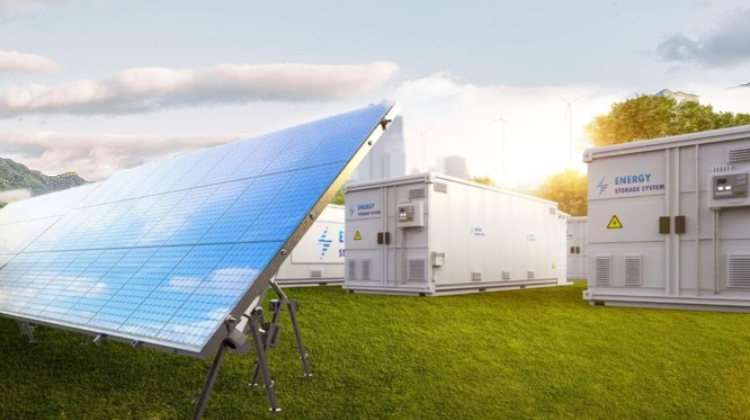Record boost: 16.1 GW of renewables approved in a single quarter in the United Kingdom

The country recorded a year‑on‑year increase of 195% in solar, wind and storage, with major projects led by Ørsted, RWE and ScottishPower. Experts warn about grid bottlenecks and the urgent need for further investment.
During the second quarter of 2025 the United Kingdom registered a record with 16.1 GW of new renewable capacity approved, almost triple compared with the same period of the previous year.
This momentum reflects the consolidation of large‑scale initiatives such as Hornsea 3, Green Volt and Earba Storage, while the deployment of solar and storage systems intensifies. Regulatory acceleration and reforms to the planning system are proving decisive in this context.
The increase is significant considering that the 16.1 GW authorised represent a 195% year‑on‑year rise. In parallel, applications for new batteries reached 8.4 GW, compared with 6 GW currently in operation, highlighting the scale of the transition. Overall, installed capacity in solar, onshore and offshore wind already exceeds 45 GW.
Among the flagship projects is Hornsea 3 Offshore Wind Farm, promoted by Ørsted, which will contribute 2.9 GW on the east coast of England and include a storage system of up to 300 MW / 600 MWh, scheduled to enter operation in 2027. Similarly, the floating project Green Volt, developed by Flotation Energy and Vårgrønn off Aberdeen, was approved in 2024 for 560 MW, with an investment of £2.5 billion and the creation of 2,800 jobs. Meanwhile, Rampion 2, promoted by RWE in partnership with Enbridge and Green Investment Group, is progressing in its permitting with 1.2 GW planned towards 2030.
In Scotland, the Inch Cape Wind Farm project, led by Red Rock Power Limited and ESB, will add 1.08 GW in the North Sea with installation works scheduled from 2025. In parallel, the Earba Storage Project, proposed by Iliad Energy, will provide 1.8 GW and 40 GWh of pumped hydro storage, making it the largest facility of its kind in the country. In the solar field, the Cleve Hill Solar Park, promoted by Lightsource bp and Hive Energy, has been operational since July 2025 with 373 MW of photovoltaics complemented by 150 MW of batteries.
Growth is also reflected in the dynamics of permitting. In the twelve months prior to April 2025, 690 solar projects totalling 4,595 MW were approved, representing a 16% increase compared with the previous year. By contrast, onshore wind, with 46 projects approved and 868 MW, recorded a 33% decline in capacity, while offshore wind showed a moderate increase with 1,282 MW approved across five projects. Demand for storage systems continues to expand, although grid connection bottlenecks remain.
In this context, sector experts highlight both the potential and the challenges. William Kendall, a business leader in Suffolk, states that “we need to build a lot more solar farms and some wind turbines too”, stressing the possibility of combining renewable generation with agriculture and biodiversity.
Meanwhile, Matthew Boulton, director of solar and storage at EDF Renewables UK, affirms: “We are at a crucial moment for the solar sector and we fully support the clear and coordinated measures set out in the Solar Roadmap, which will help unlock the full potential of solar in the UK”.
The regulatory framework is also evolving. The Planning and Infrastructure Bill 2025 seeks to speed up the approval processes for energy infrastructure, while Ofgem has reformed the connection system by prioritising projects ready to operate, with the aim of enabling new installations from 2026 and mobilising up to £40 billion annually in private investment.
Likewise, the Clean Power 2030 plan under the leadership of Ed Miliband promotes centralised planning for large offshore wind farms and the development of long‑duration storage to ensure energy security.
However, technical challenges remain. The operator National Grid faces structural constraints that became evident during Storm Floris, when overloading forced the disconnection of turbines in Scotland, raising curtailment payments to £810 million in the first half of 2025, with projections that could exceed £8 billion if the grid is not reinforced.
According to Cornwall Insight, the 2030 targets are at risk, as projections suggest the UK would only reach 37 GW of offshore wind, 17 GW of onshore wind and 29 GW of solar, figures insufficient compared with official objectives.
The rollout of solar, wind and storage projects is advancing in parallel with regulatory reforms aimed at reducing permitting times and ensuring grid stability.
Nevertheless, grid modernisation, social acceptance, land‑use competition and the need to quadruple storage capacity represent structural challenges that must be addressed to achieve energy neutrality in the next decade.
More information: https://strategicenergy.eu/record-boost-16-1-gw-of-renewables-approved-in-a-single-quarter-in-the-united-kingdom/


